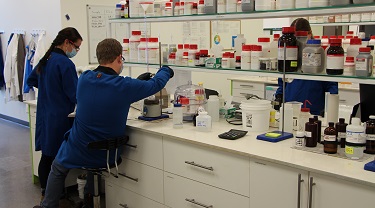Inflation concerns are mounting again. That might seem odd in a world obsessed by the negative impact of COVID-19 on growth, confidence and the ability―or inability—to recover. However, it’s a question that’s coming up repeatedly in cross-Canada roundtable discussions with key Export Development Canada customers. Are price hikes lurking around the corner, or are these fears unfounded?
By all appearances, it’s a gut-feel, instinctive reaction to worldwide over-the-top policy measures. It also flies in the face of the myopic “yesterday-is-the-new-trend” mentality that seems to pervade much of modern analysis. Let’s face it, we haven’t seen much in the way of inflation in decades. Fears that quantitative easing would spark runaway inflation in the aftermath of the Great Recession weren’t realized. Even the extremely tight, OECD-wide labour market conditions at the end of 2019 weren’t enough to kick up a wage-and-price spiral.
If so, then the prospect of immediate inflation should be even more remote. The pandemic-related plunge in output during March and April opened such a wide gap between actual production and the economy’s potential that in the short run, that at best, there was actually more likelihood of disinflation, and at worst, outright deflation.
For certain key commodities, that was exactly what happened. World oil prices momentarily went negative, and remain suppressed compared with pre-pandemic levels. Non-energy prices initially slid by 8%. However, since April, certain prices have rebounded. Metals prices are almost 8% above pre-pandemic levels, and the forestry products sub-index is in full flight, rocketing up past early-2018 cyclical highs.
Are central banks concerned? Apparently not; these sectors are isolated, and don’t reflect general price gains. Cost increases for final goods are still very modest, and if anything, the messaging coming from the Federal Reserve Board is that they would tolerate above-target inflation for a time as a means of ensuring a return to more normal economic conditions. Clearly, officials are more worried about sluggish growth, disinflation and deflation. In effect, a little inflation wouldn’t be a bad thing.
Here’s where regular business folk seem to have concerns. Older ones recall times where there was general trauma about out-of-control inflation. Many also recall the sky-high interest rates that were necessary to re-establish control. Their worry is that the excess liquidity made available by today’s larger quantitative easing programs will ultimately end up generating not a little inflation, but a lot. Do they have a point?
Well, yes, but not yet. It’s really a question of economic capacity. Print lots of extra money when there’s no spare capacity, and it’s a recipe for inflation. However, growth to date hasn’t nearly taken us back to late-2019 labour constraints; we have a long way to go until unemployment rates match those lows. Some sectors of the economy are seeing productive capacity tighten up again, but others—notably energy, aerospace and other tourism-related industries―still have a long way to go.
It’s clear that the possibility of inflation has everything to do with the speed of economic recovery. May and June saw a rapid, V-shaped rebound that has given way to a less-steep climb. The latest high-frequency data show Canada and other developed economies slowing markedly, as second-wave infections produce a round of targeted closures and go-slow measures. Thus far, the only evidence of price spikes is very isolated.
Could a rapid rebound resume? It’s not impossible; after all, there is substantial pent-up spending from the slow months, and money in bank accounts to fund it. But to part with that cash, confidence would need to rebound. That’s unlikely to happen before we see COVID-19 containment measures that are near-universally effective—or the actual development and distribution of an effective vaccine. Under those circumstances, inflation is a possibility. Runaway inflation is another matter altogether.
The bottom line?
Inflation concerns are well-founded, but premature. Faster-growing sectors of the economy may be exhibiting inflation-like conditions, but there are lots of others still struggling with low employment and oodles of spare capacity. Rapid growth could resume, but it wouldn’t last forever, and would be at least partially restrained by the withdrawal of substantial liquidity. It’s always good to be vigilant about inflation. But in today’s situation, some inflation would actually be one of the surest signs that we’re recovering from this very bizarre episode.
This commentary is presented for informational purposes only. It’s not intended to be a comprehensive or detailed statement on any subject and no representations or warranties, express or implied, are made as to its accuracy, timeliness or completeness. Nothing in this commentary is intended to provide financial, legal, accounting or tax advice nor should it be relied upon. EDC nor the author is liable whatsoever for any loss or damage caused by, or resulting from, any use of or any inaccuracies, errors or omissions in the information provided.






